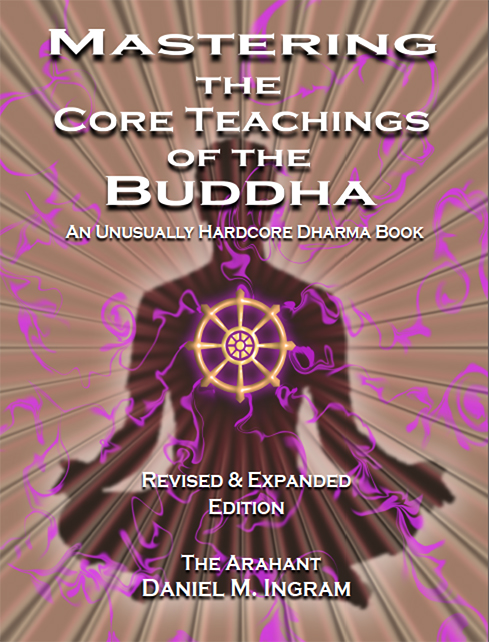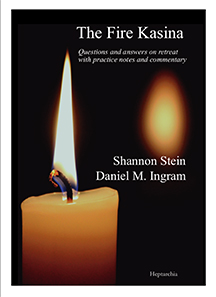Vimuttimagga, The Path of Freedom
← Wobble and Fall | 71. More Practical Tidbits →
After just less than a week of going through what felt like a sequential emphasis during the distorted periods on the four foundations of mindfulness, first physical sensations, then aspects of vedana (the degree of pleasantness, unpleasantness, or neutrality of sensations), then mental qualities and thoughts, then finally attention itself, in that order (no idea why), it felt like everything converged in some complete and total way, flipped over, and that was it. This shift contained the deep and abiding realization that it was never not that way, that even the most screwed-up periods had been as they were even when they seemed that they weren’t.
I had barely done any teaching or writing in the few years before that retreat, frustrated as I was by an understanding that felt very close but was not quite there. Just after the thing synced up for the last time, during an interview with the Sayadaw, I mentioned this lack of teaching and said that I had thought about teaching again, and he looked me square in the eyes and said simply, “Good.” Then he told a long story about some monks in Burma and then at the end as a summary of the clear moral of the story said, “And that is why you shouldn’t go around saying you are an arahant or have powers,” and again looked me straight in the eye.
There were only three people in that room, the faith-follower nun, him, and myself. I clearly have not followed that second piece of advice, but then again neither did he, as he demonstrated powers on that retreat and clearly considered himself an arahant and would speak about it so clearly that it couldn’t possibly even be called veiled speech despite him never using the actual word.
I should mention something here about Sayadaw U Pandita Jr.: it was just great to have someone who wasn’t impressed or intimidated by my abilities, but instead just kept his eye on the prize and stayed gently focused on that. He was perfectly fluent and comfortable with map theory, fluent and comfortable with deep concentration, didn’t seem to care about the powers except as a diagnostic and teaching tool, and had an apparently unflappable steadiness to him in the face of all my descriptions of the wild and varied territory I found myself in during that retreat. My best advice: if you can find a teacher at that level, study with that one. There is much to be said for devotion to those worthy of devotion, which unfortunately is a pretty small number of teachers, but if you find a good one, an honorable one, an impeccable one, then devote yourself to that teacher by studying well, listening to and applying what they say, and practicing with everything you have, as it is likely to pay off.
All these years later the field has never destabilized again, the wobble never recurred, and things never un-synced. I knew when it happened that my vipassana quest was over. I had the answer I sought, and it has held up, event after event, challenge after challenge, cycle after cycle. There have been many interesting ways this insight has percolated through old patterns and relative issues. There have been many interesting shifts of perspective that have arisen from that integration process. However, getting that core insight in the first place is really the key point, the thing that made the difference I was looking for, and so hopefully this book will help inspire that in you, assuming you don’t already have it, as you just might, and if you do, good on ya! I give great thanks to the thousands of practitioners over the millennia who have preserved and transmitted these teachings for those of us living today. May we do our best to live up to their standards and find ways to continue to realize and transmit the dharma to those who come after us.
Thus, the answers are in Part One, as Part One states—in the initial, formal vipassana instruction—to be very clear about all sensations and to perceive all sensations arise and vanish. That is the high dharma that somehow hundreds of pages of this book come down to. It is that simple, at least from a vipassana point of view. That is the profound beauty of the dharma of the Buddha: it is excellent, straightforward, explainable, doable, immediate, based on very simple, clear hypotheses that are testable even early on in experience and continue to hold up all the way through to the end.
That is the story, at least as far as fundamental insight goes. Since then, there has been much more to learn about the first two trainings, particularly morality, the whole scope of relative skillful living in the world, and optimizing value and meaning, which, as I said, is an endless and limitless undertaking. There is much to relate on that front beyond what is recounted here, but, for the time being, this is hopefully enough to convey multiple practical dharma points, chief among them being that, while deep insights can be attained in this lifetime, and they beat the pants off not having them, each of the scopes of the three trainings shouldn’t be absolutely counted on to perfectly illuminate any of the others, even though they are definitely interdependent. All three trainings of morality, concentration, and wisdom are worthy of deep attention, study, and practice throughout our mortal, mammalian lives.

